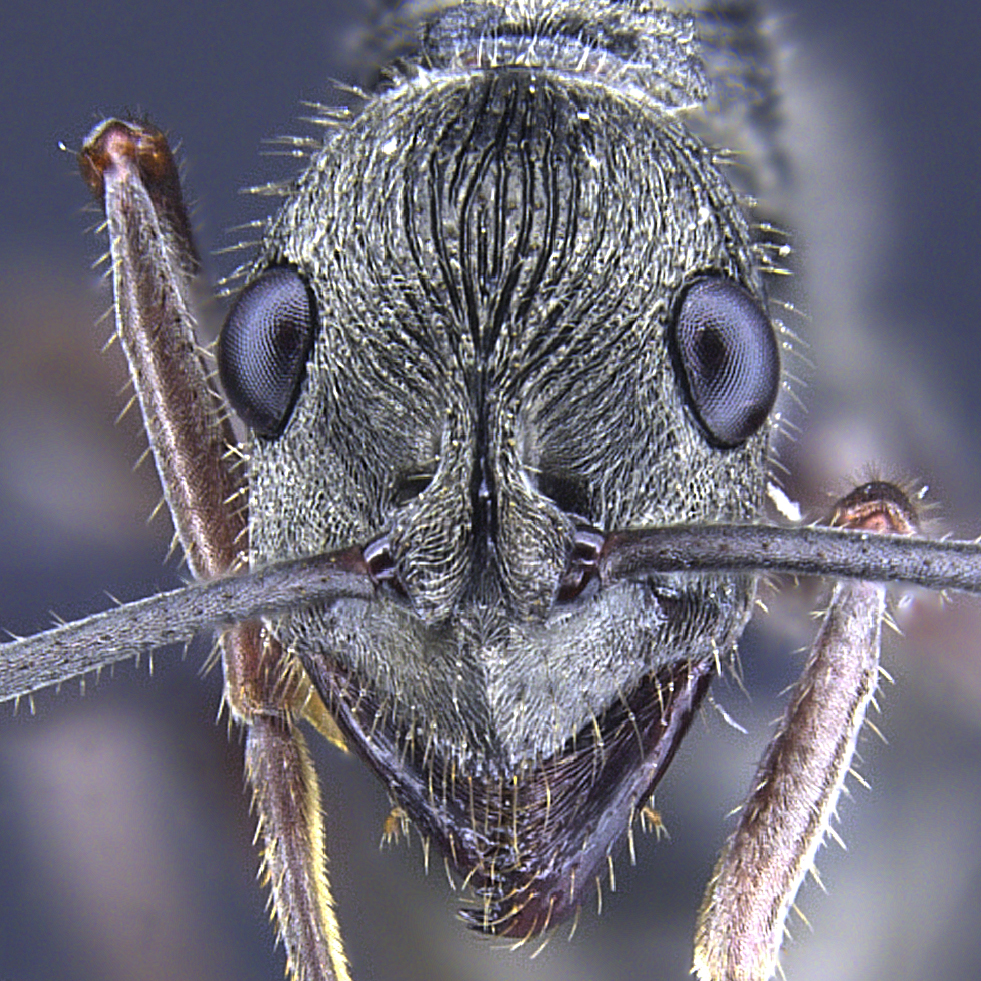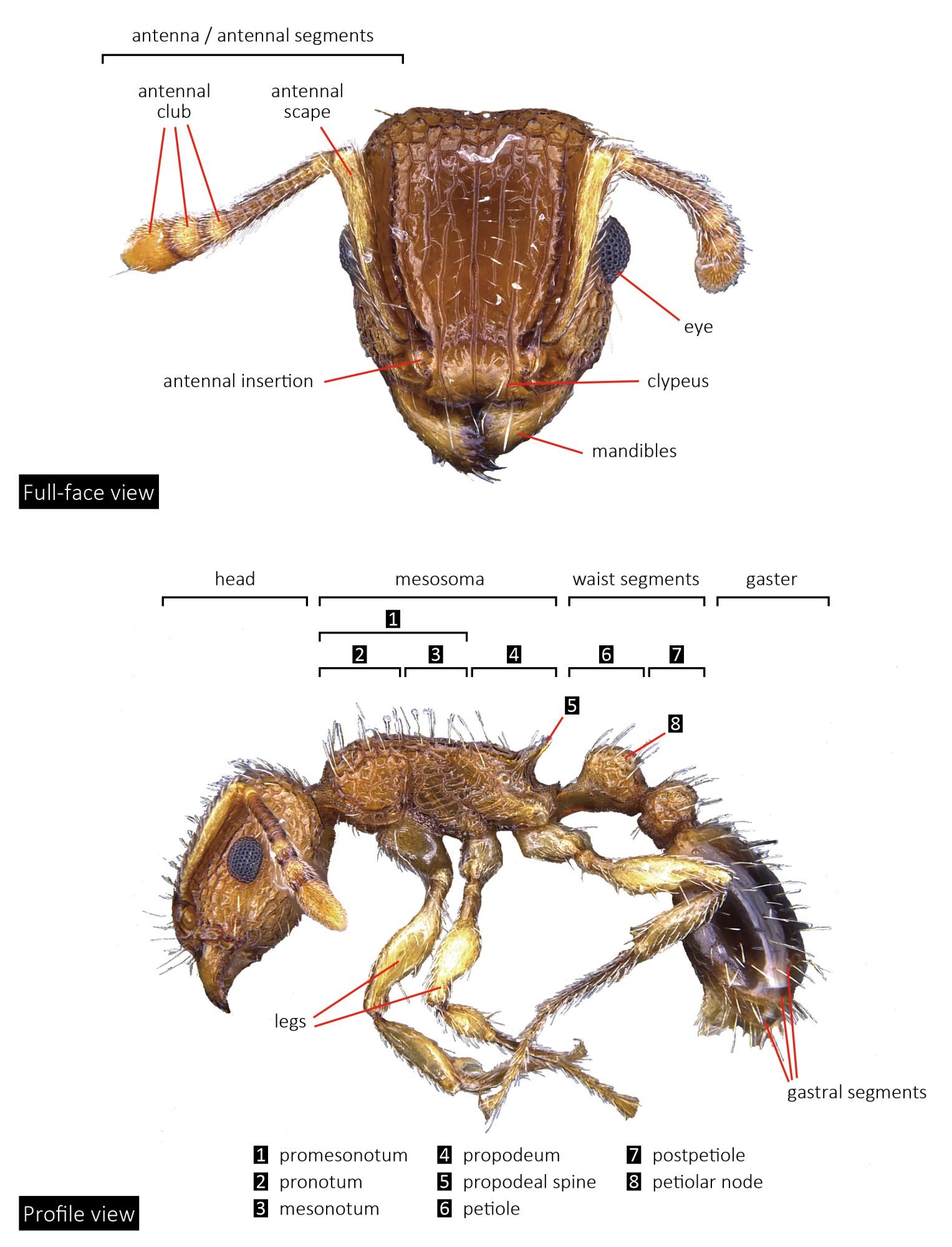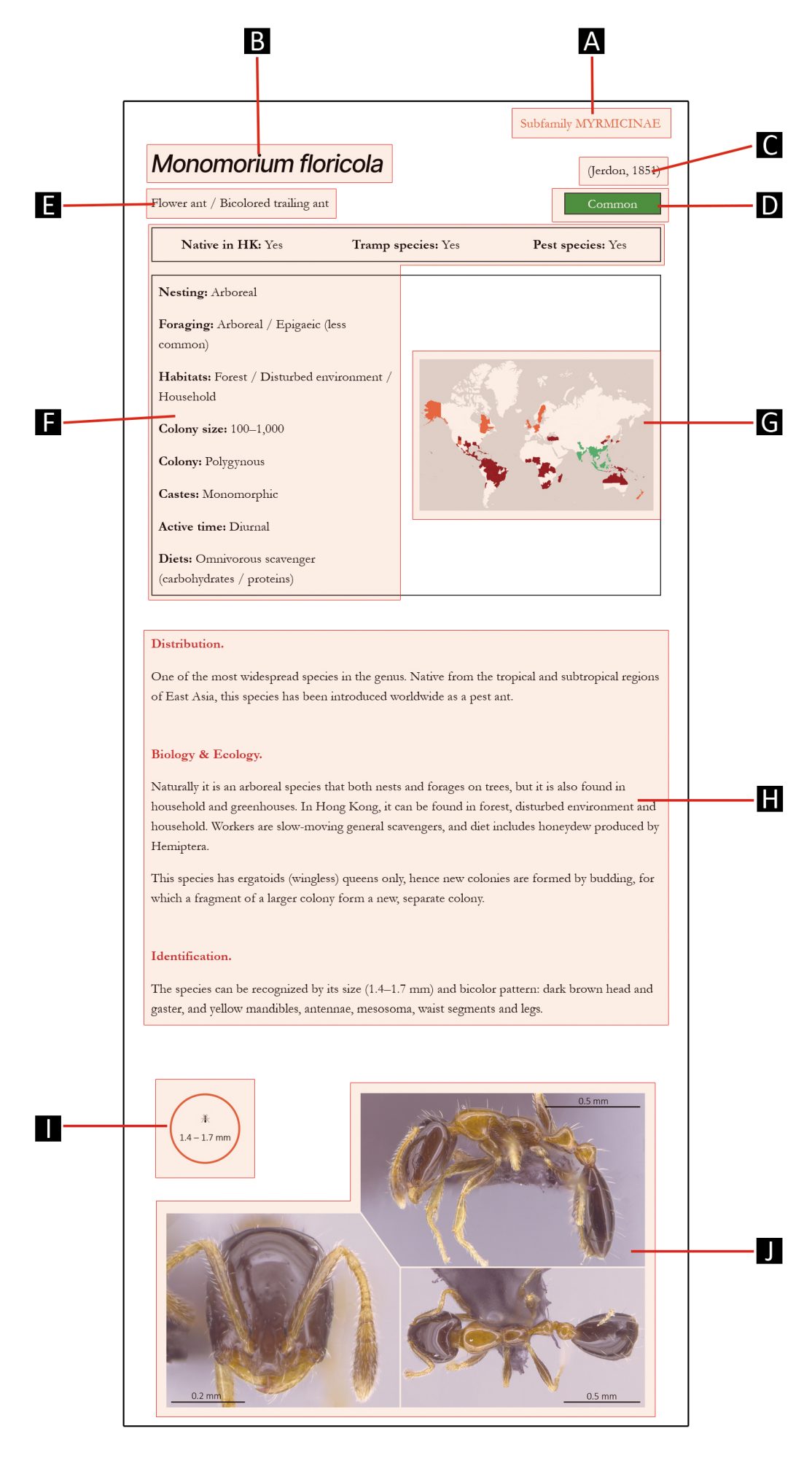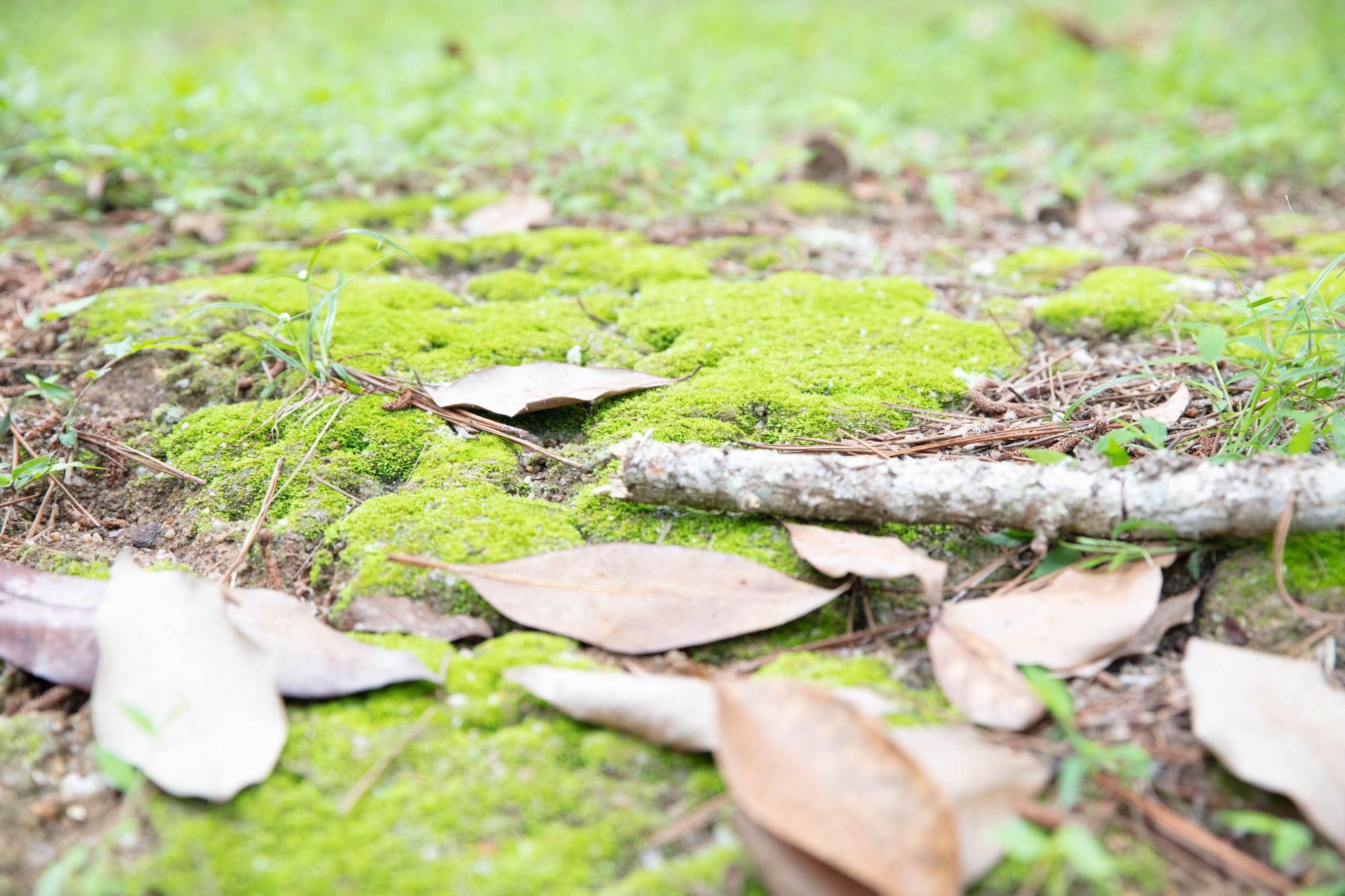
Subfamily PONERINAE
GENUS
Diacamma
Mayr, 1862
Asian bullet ants
Distribution.
A moderate-sized ant genus with 44 species described. The genus has a limited distribution, restricted to tropical and subtropical regions of East Asia and Oceania.
Biology & Ecology.
Nests of Diacamma species are usually located within the soil, decaying wood or trees. Nests are small, contain a few dozen of workers to several hundreds of workers. Diacamma species are general hunters of other arthropods, such as termites.
Diacamma species are known for an uncommon reproductive strategy: there are male but no queen caste, some workers (known as gamergates) are instead responsible for mating and reproduction. While all workers have equal reproductive potentials, only those with higher social hierarchy are able to mate.
Identification.
Diacamma species are large in size (9–12 mm), with black coloration, sometimes with a metallic tint or have slightly reddish legs. They can be easily recognized by the distinctive spiral pattern sculpture on their body, and their waist segment (petiole) with two spines.
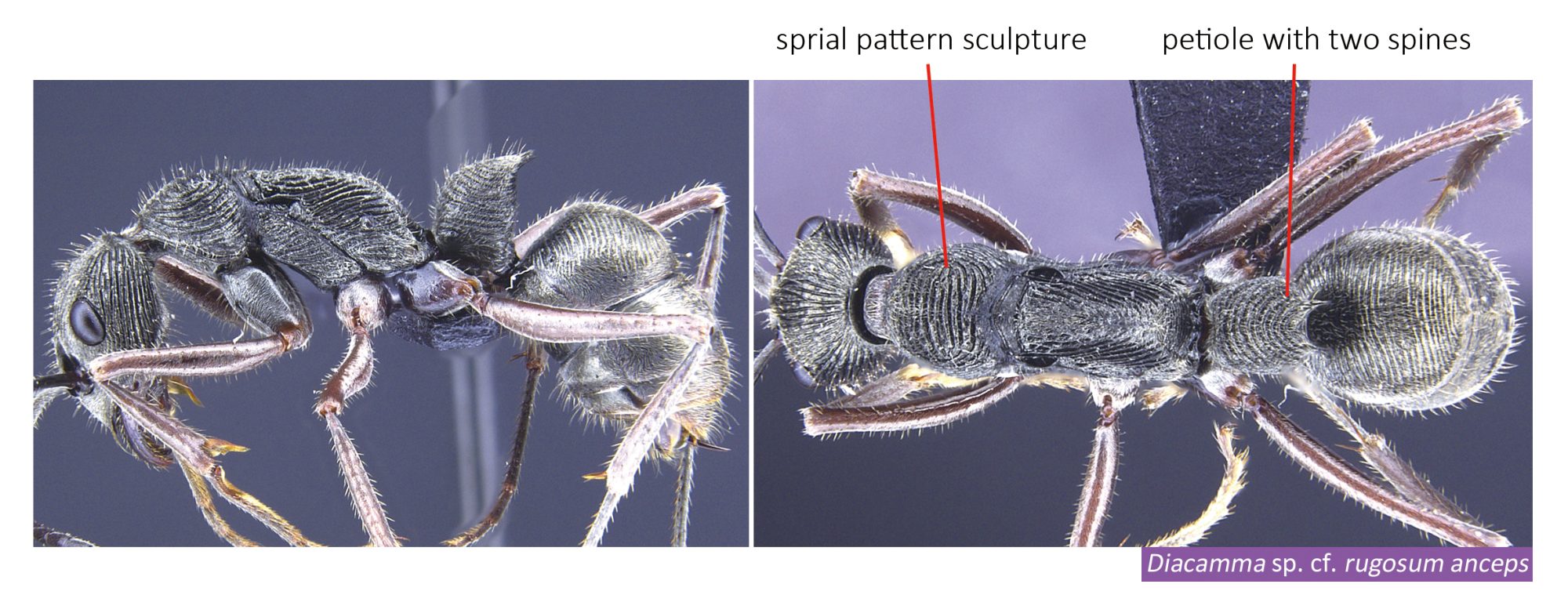
Species in this genus
